Ponce de Leon Hotel/Flagler College
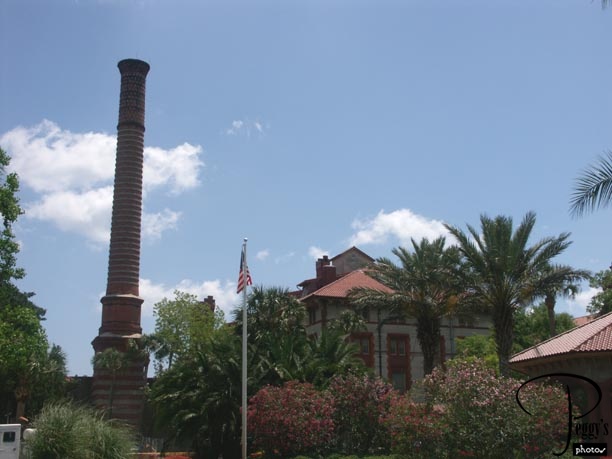
The tour was over and I started on a walk around St. Augustine, but first ate a ham and cheese sandwich for lunch across the street from the college at a small cafe. Photo: A side of Flagler College. This smokestack is seen in the St. Augustine skyline.

Ponce de Leon Hotel/Flagler College
Ponce de Leon Hotel/Flagler College
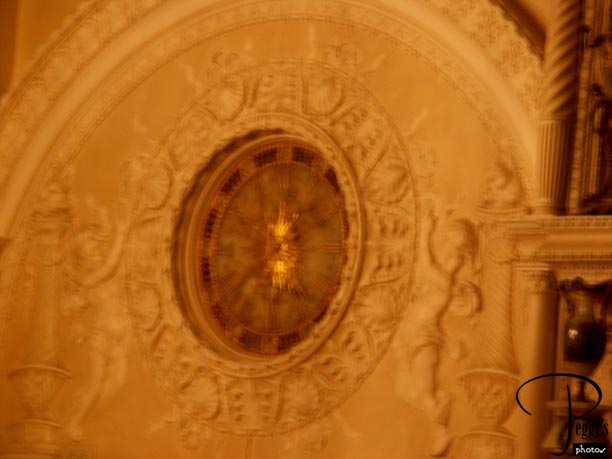
Clock made by Thomas Edison in the lounge.

Ponce de Leon Hotel/Flagler College
Ponce de Leon Hotel/Flagler College
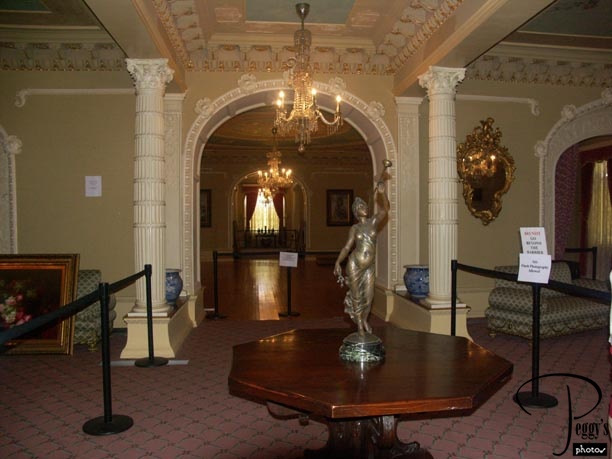
More of the lounge.

Ponce de Leon Hotel/Flagler College
Ponce de Leon Hotel/Flagler College

The lounge.

Ponce de Leon Hotel/Flagler College
Ponce de Leon Hotel/Flagler College
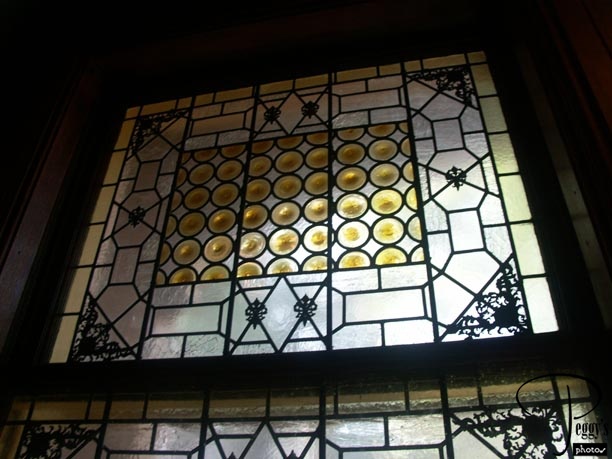
Another close–up view.

Ponce de Leon Hotel/Flagler College
Ponce de Leon Hotel/Flagler College
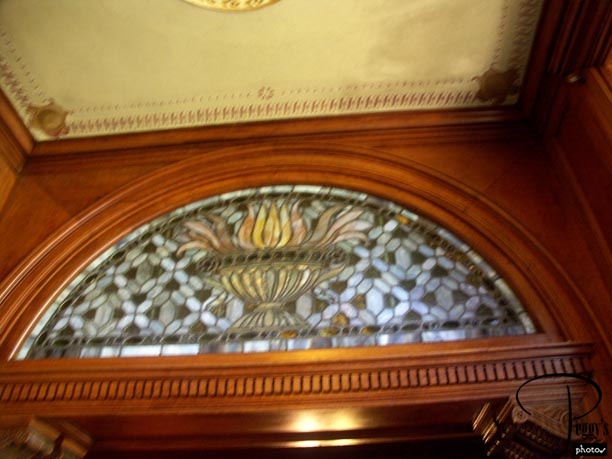
Close–up view.

Ponce de Leon Hotel/Flagler College
Ponce de Leon Hotel/Flagler College
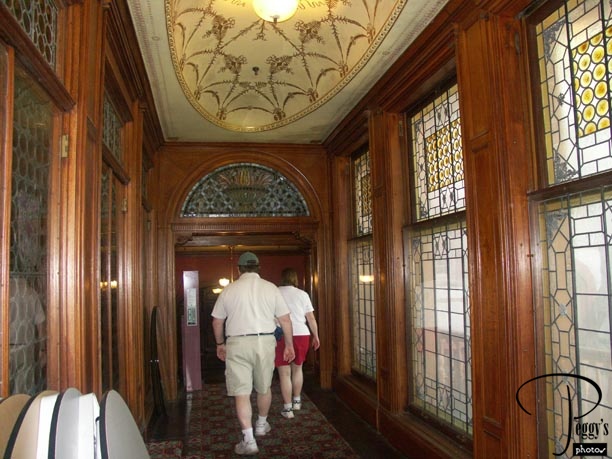
Hallway with Tiffany stained glass.

Ponce de Leon Hotel/Flagler College
Ponce de Leon Hotel/Flagler College
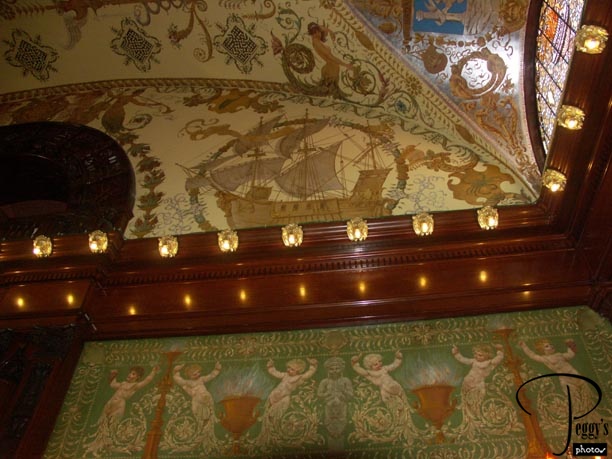
Above the door.

Ponce de Leon Hotel/Flagler College
Ponce de Leon Hotel/Flagler College
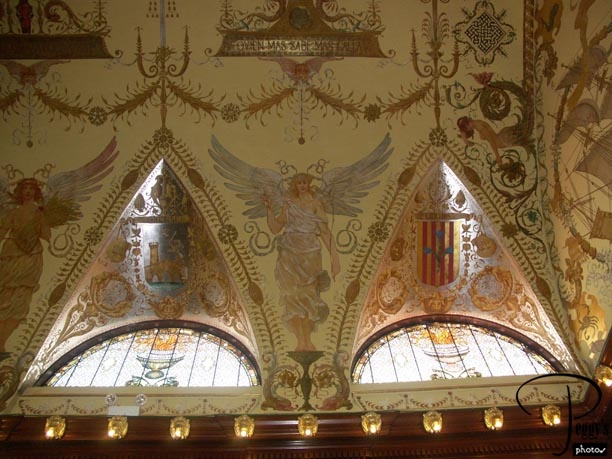
Close–up view.

Ponce de Leon Hotel/Flagler College
Ponce de Leon Hotel/Flagler College
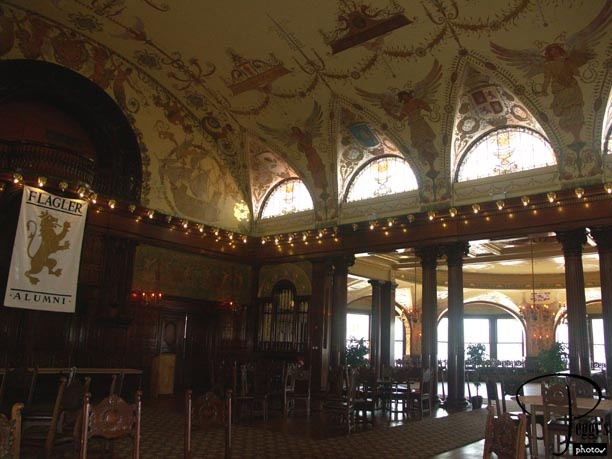
More of the dining room.

Ponce de Leon Hotel/Flagler College
Ponce de Leon Hotel/Flagler College
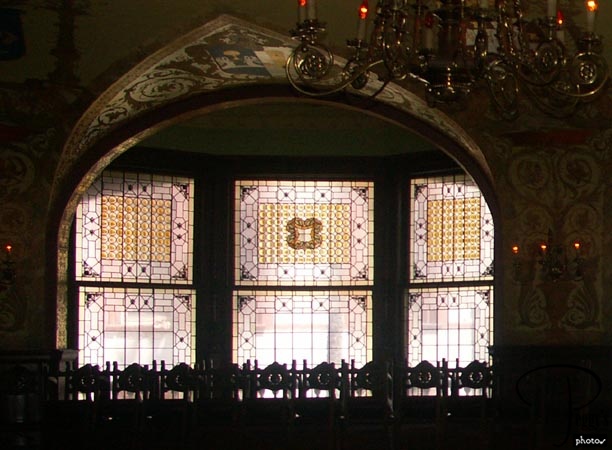
Closer–up view.

Ponce de Leon Hotel/Flagler College
Ponce de Leon Hotel/Flagler College
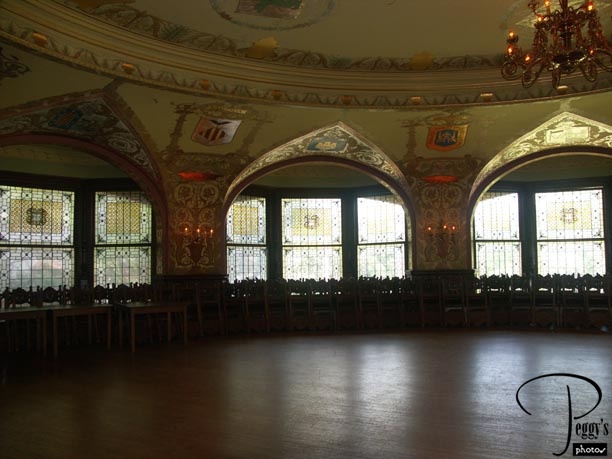
Tiffany stained–glass windows in the dining room.

Ponce de Leon Hotel/Flagler College
Ponce de Leon Hotel/Flagler College
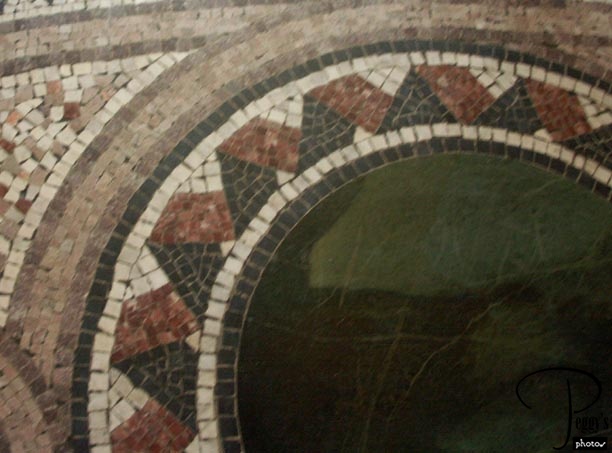
If you look closely at mosaic ring, you will see an imperfection. This was done on purpose as Henry Flagler, a minister’s son, believed that only God could make a perfect masterpiece, so he purposely left one thing inperfect in the design of his hotel.

Ponce de Leon Hotel/Flagler College
Ponce de Leon Hotel/Flagler College
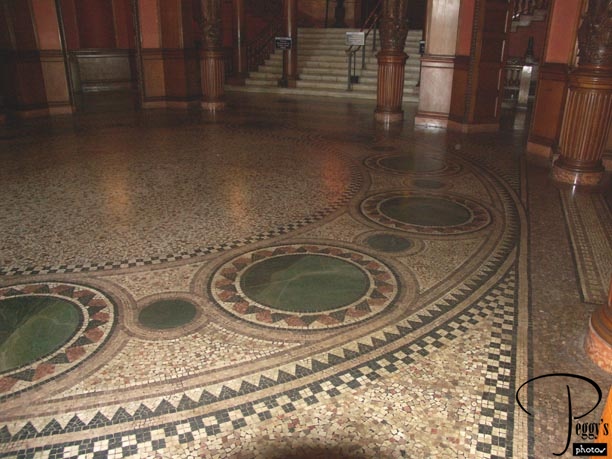
African mosaic floor.

Ponce de Leon Hotel/Flagler College
Ponce de Leon Hotel/Flagler College
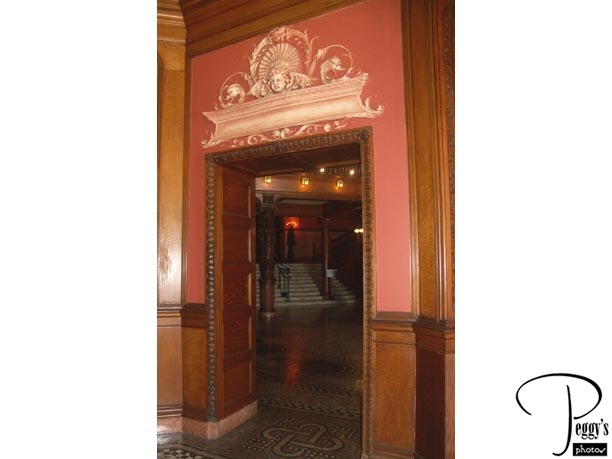
View of the staircase though a door.

Ponce de Leon Hotel/Flagler College
Ponce de Leon Hotel/Flagler College
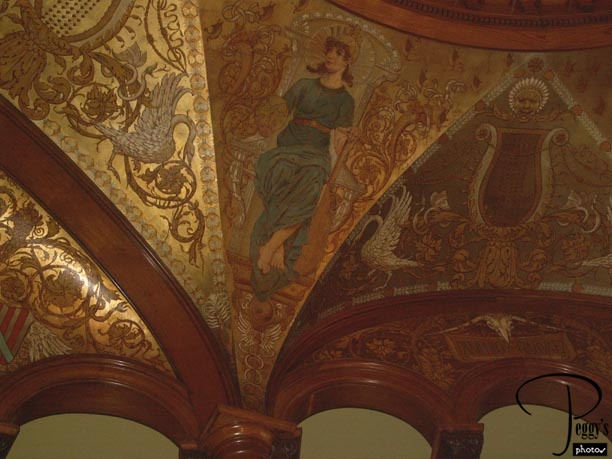
Closer–up view.

Ponce de Leon Hotel/Flagler College
Ponce de Leon Hotel/Flagler College
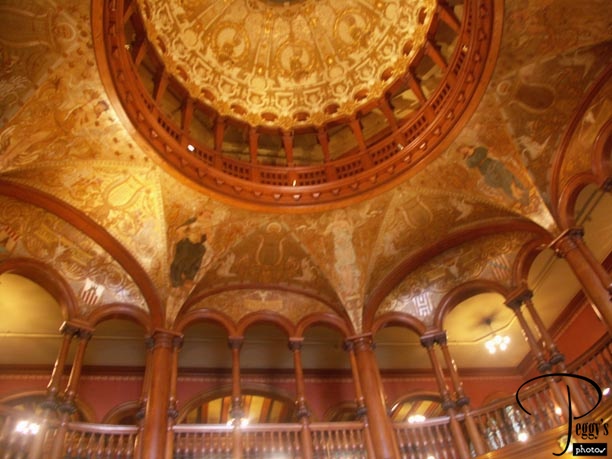
Around the dome.

Ponce de Leon Hotel/Flagler College
Ponce de Leon Hotel/Flagler College
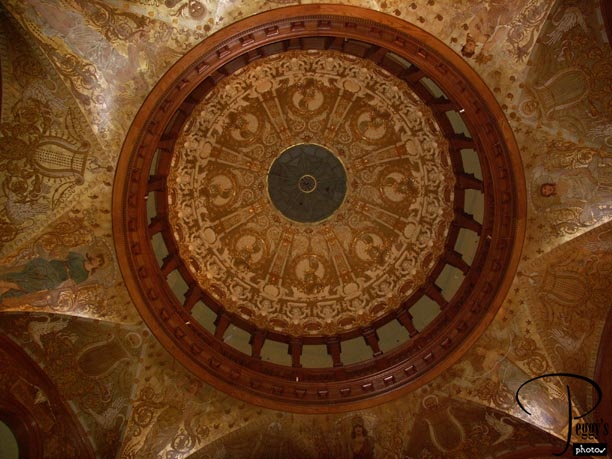
The dome of the rotunda.

Ponce de Leon Hotel/Flagler College
Ponce de Leon Hotel/Flagler College
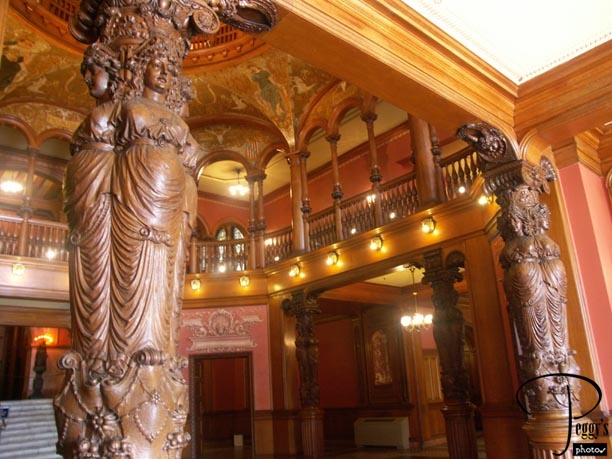
Caryatids decorating the lobby.

Ponce de Leon Hotel/Flagler College
Ponce de Leon Hotel/Flagler College

Inside the college. The rooms of the hotel that we are now going to tour are actually now part of the girls dormitory, ones which were the Ponce de Leon’s public rooms.

Ponce de Leon Hotel/Flagler College
Ponce de Leon Hotel/Flagler College
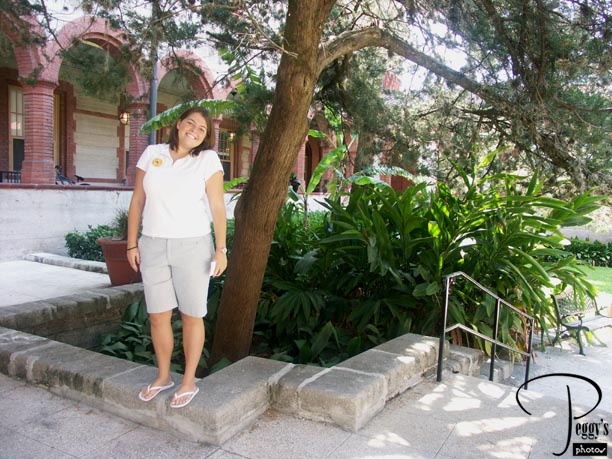
Our lovely tour guide Amanda, a student at Flagler College. The school was already on summer break, so not many students were seen. Amanda told us that Flagler College is a small private liberal arts college with 2100 students, with 60% of them Florida residents. There are 2.5 female students to every male student. The fees are $12,000 a year and that, unbelievably, also includes tuition as well as room and board (there was a mother of a student on our tour and she said with everything included the total expenses for a student run about $15,000 a year).

Ponce de Leon Hotel/Flagler College
Ponce de Leon Hotel/Flagler College
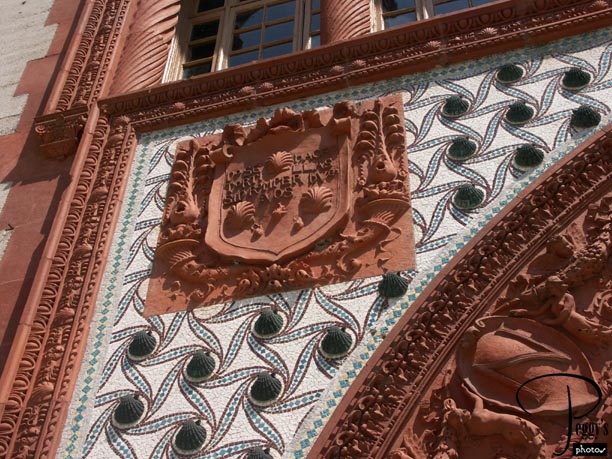
The motto appearing on the left of the entrance: “He who will not when he can can’t when he will.”

Ponce de Leon Hotel/Flagler College
Ponce de Leon Hotel/Flagler College
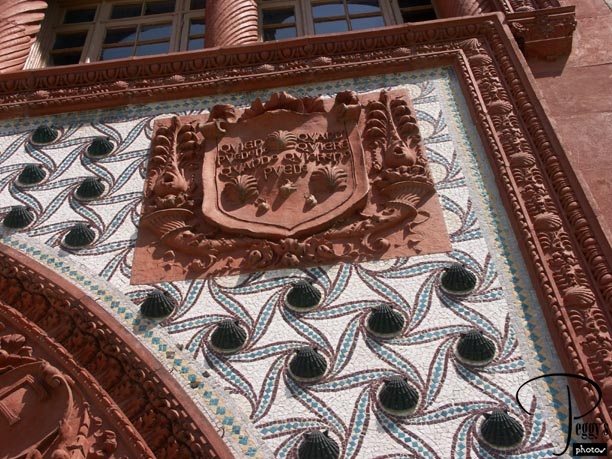
The motto appearing on the right of the entrance is as follows: “You can’t make omelettes.”

Ponce de Leon Hotel/Flagler College
Ponce de Leon Hotel/Flagler College
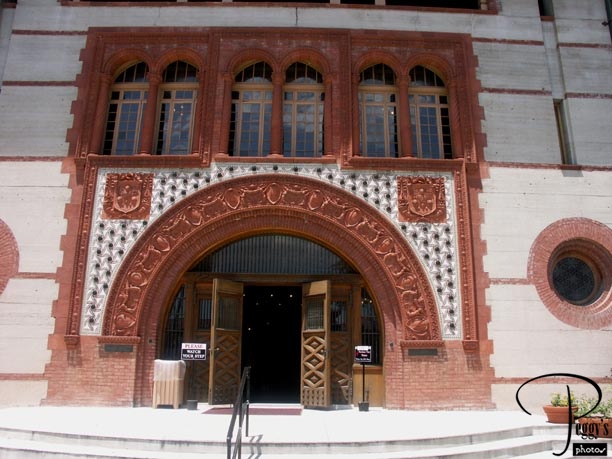
The entrance.

Ponce de Leon Hotel/Flagler College
Ponce de Leon Hotel/Flagler College
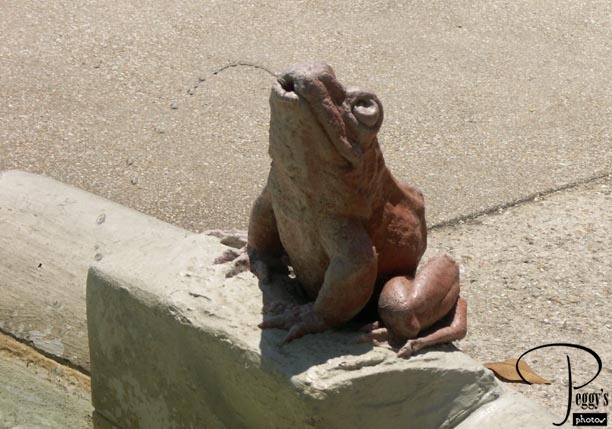
Close–up of one of the frogs.

Ponce de Leon Hotel/Flagler College
Ponce de Leon Hotel/Flagler College
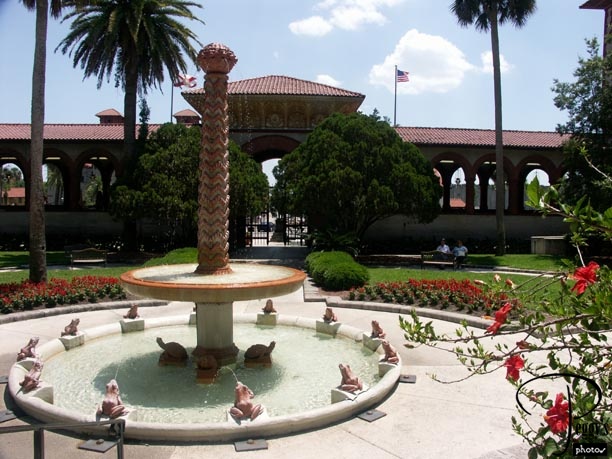
Close–up of the fountain, looking toward King Street. The four turtles in the middle of the fountain represent the four seasons. The 12 frogs represent the number of months of the year.

Ponce de Leon Hotel/Flagler College
Ponce de Leon Hotel/Flagler College
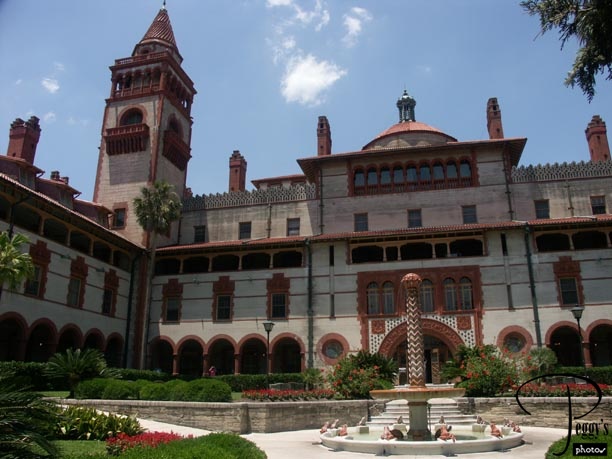
Inside the grounds. The column at the left was a water tower for the hotel. There is a similar column to the right, both of which are seen in the St. Augustine skyline.

Ponce de Leon Hotel/Flagler College
Ponce de Leon Hotel/Flagler College
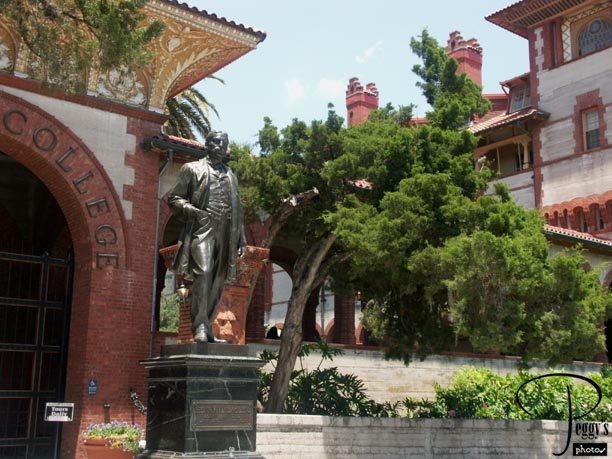
Statue of Henry Flagler.

Ponce de Leon Hotel/Flagler College
Ponce de Leon Hotel/Flagler College
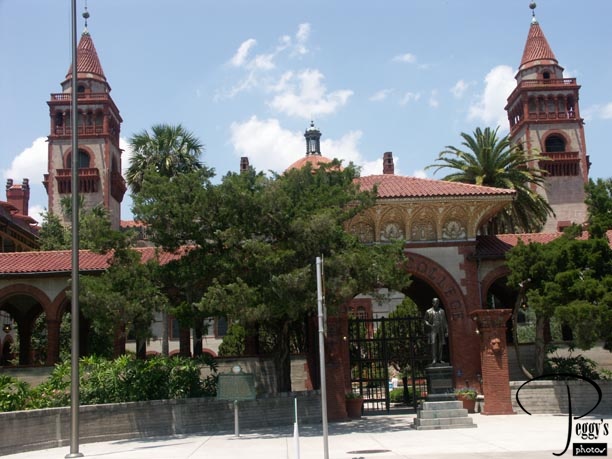
very quickly walked from the Castillo de San Marcos to Flagler College to be in time to take the 10 a.m. tour. It is an excellent tour to go on, given every hour, every day, from 10 a.m. on and its cost is well under $10.00. I didn’t take the tour last time I was in St. Augustine. The Ponce de Leon Hotel was built between 1885 and 1887 by Henry Flagler, the railroad magnate. It was designed by Carrere and Hastings in the Spanish Renaissance style. The interior was decorated in marble and carved oak and the murals were painted by Tojetti and George W. Maynard and the stained–glass windows were created by Louis Tiffany. In 1968, it was sold to Flagler College. Photo: entrance to the college.

Ponce de Leon Hotel/Flagler College
Castillo de San Marcos National Monument
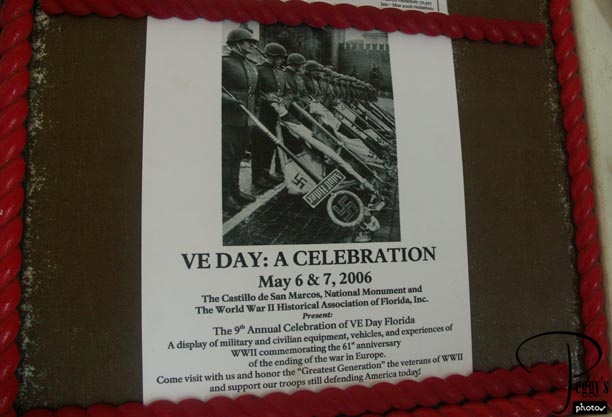
VE (Victory in Europe) Day Celebration notice, to be held this weekend.

Castillo de San Marcos National Monument
Castillo de San Marcos National Monument
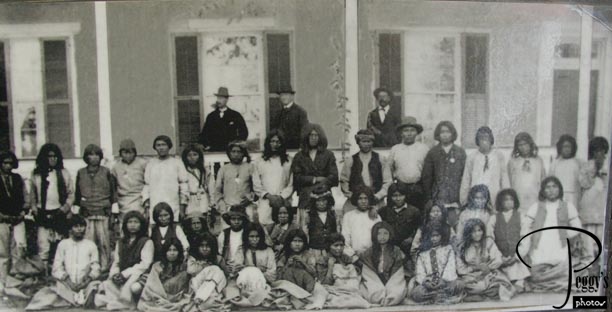
Another photo showing Colonial Pratt, center, behind his students, children belonging to Geronimo’s band who were confined to Castillo de San Marcos since his surrender in 1886. Captain Pratt later founded the Carlisle Indian School.

Castillo de San Marcos National Monument
Castillo de San Marcos National Monument
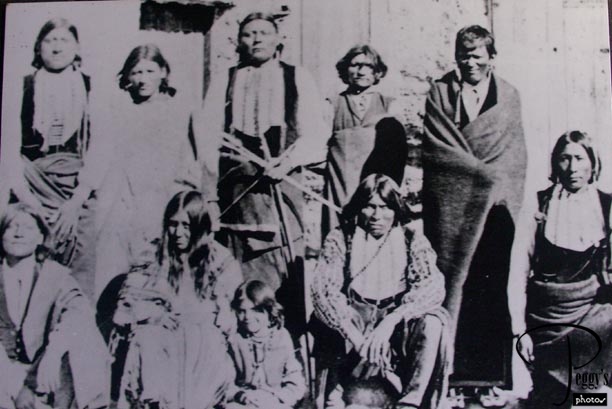
Photo at the fort of Plains Indians, 70 of which were imprisoned in the fort in the spring of 1875. Forty years earlier, Osceola, the leader of the Seminole Indians, were also imprisoned here.

Castillo de San Marcos National Monument
Castillo de San Marcos National Monument
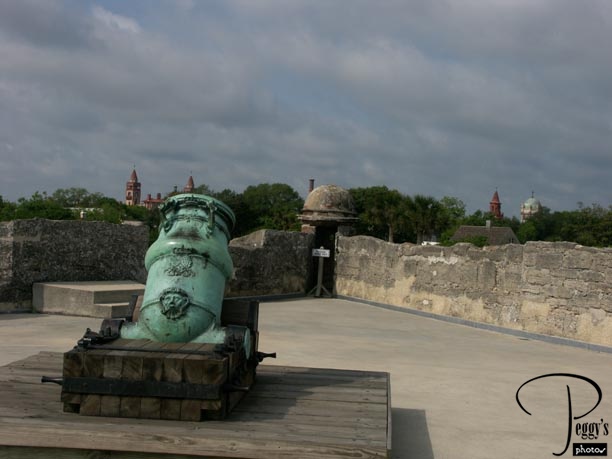
A mortar. It could fire a cannon high into the air.

Castillo de San Marcos National Monument
Castillo de San Marcos National Monument
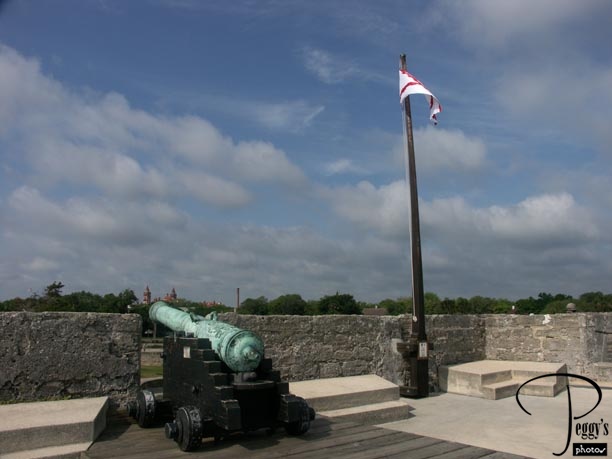
View from the gundeck toward the city. The flag being flown is the First Spanish Period flag. The black cannons were made from cast iron; the green cannons were made from bronze––90% copper and 10% tin. These are the original cannons and are from 250 to 300 years old. They could fire cannons from 1 to 3 miles.

Castillo de San Marcos National Monument
Castillo de San Marcos National Monument
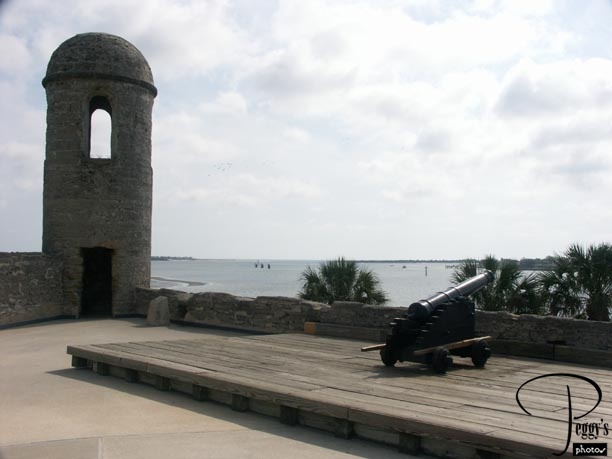
Closer–up view of the watchtower.

Castillo de San Marcos National Monument
Castillo de San Marcos National Monument

View of the watchtower, moat, and seawall. A lookout would watch for ships coming into Matanzas Bay from the top of the watchtower.

Castillo de San Marcos National Monument
Castillo de San Marcos National Monument
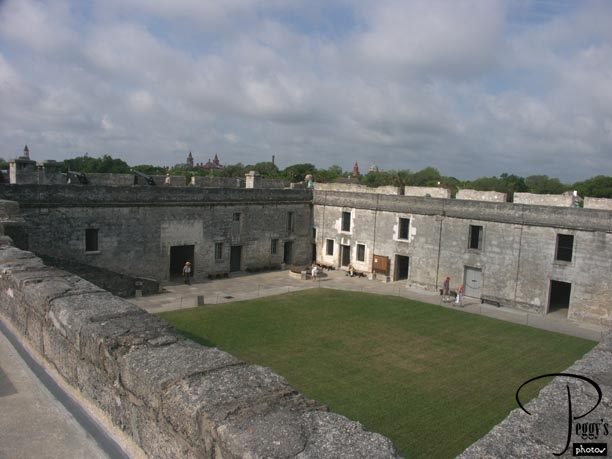
Open courtyard located in the center of the fort. It was used by the Spanish for drilling and inspections. The entire population of St. Augustine came here during sieges for protection. Photo taken from the gundeck.

Castillo de San Marcos National Monument
Castillo de San Marcos National Monument
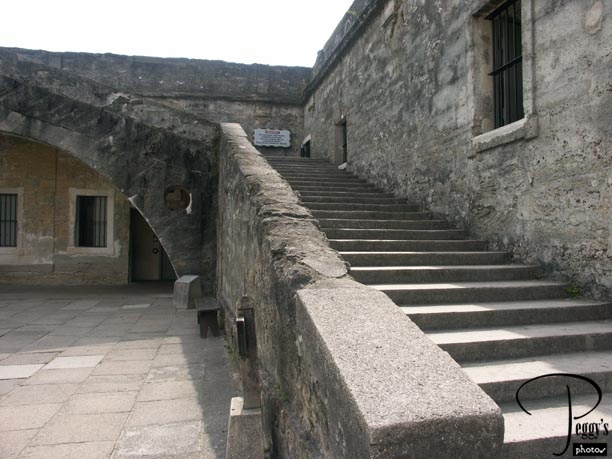
Ramp used by the Spanish to bring cannons up to the gundeck.

Castillo de San Marcos National Monument
Castillo de San Marcos National Monument
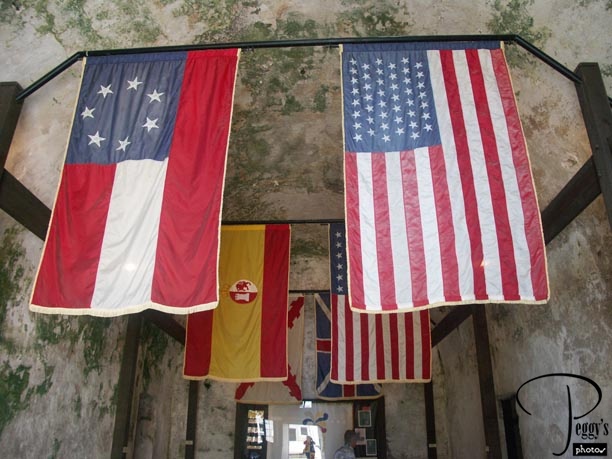
The flags in the museum. From the back left: flag of the First Spanish Period, 1565–1763; back right: flag from the British Period, 1763–1784; middle left: flag from the Second Spanish Period, 1784–1821; middle right (partially hidden): 23–Star American Flag, 1820–1822; left front: the First Confederate National Flag, flown from March 5, 1821, to May 1863; right front: 45–Star American Flag, flown from July 4, 1896 for 12 years.

Castillo de San Marcos National Monument
Castillo de San Marcos National Monument
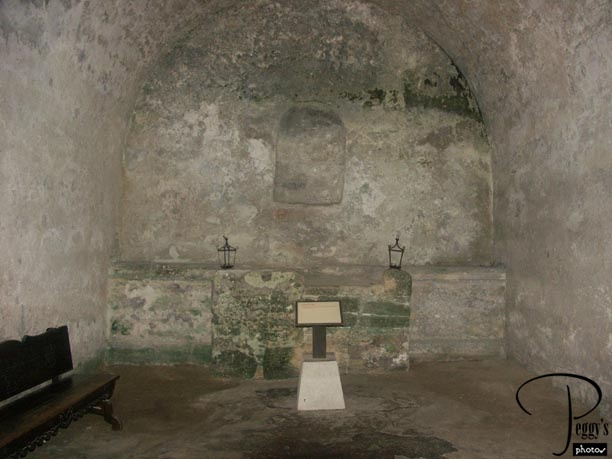
The chapel.

Castillo de San Marcos National Monument
Castillo de San Marcos National Monument
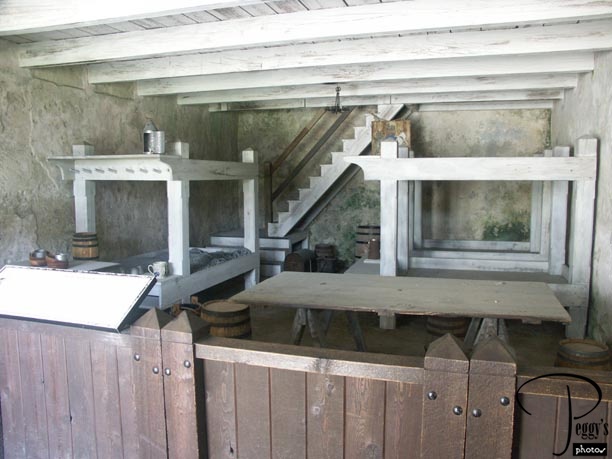
The British barracks. These were the British soldiers quarters.

Castillo de San Marcos National Monument
Castillo de San Marcos National Monument
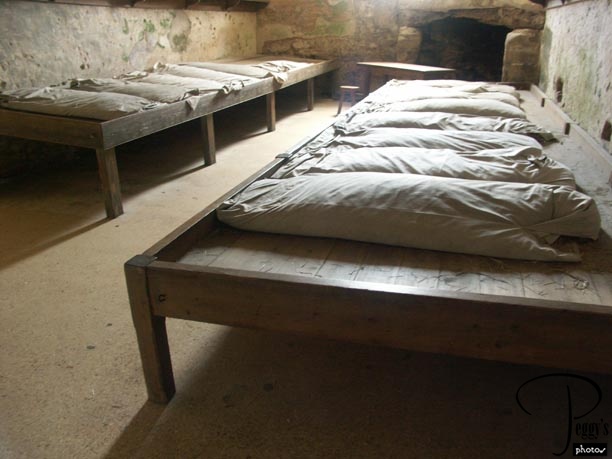
The guard room. Spanish soldiers slept and cooked their meals here when they were on 24–hour duty. No one lived at the fort.

Castillo de San Marcos National Monument
Castillo de San Marcos National Monument
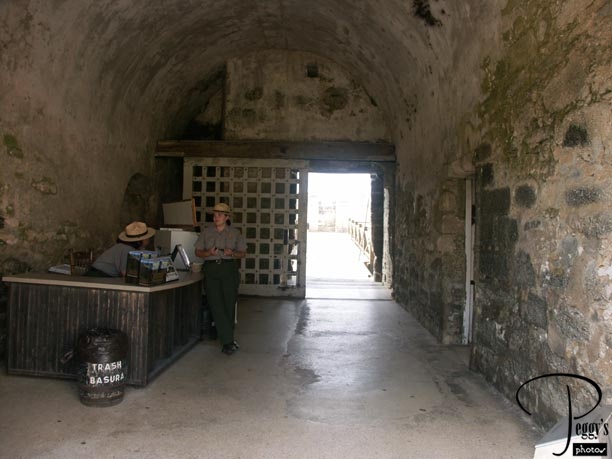
The sallyport––the entrance passageway into the fort. Its vaulted celing and curved–shaped Roman arch supported the weight of the cannon above it.

Castillo de San Marcos National Monument
Castillo de San Marcos National Monument
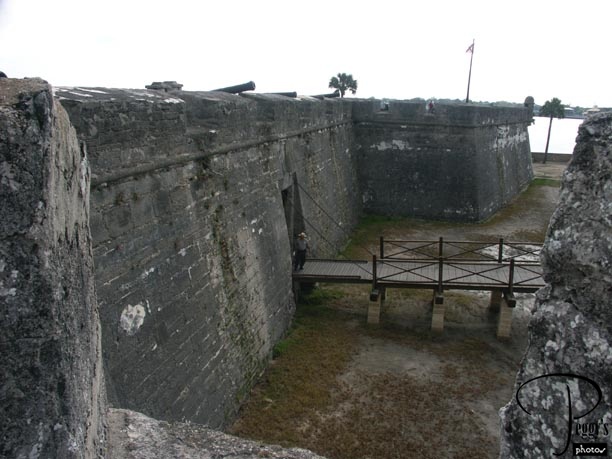
View of the entrance and moat from the upper gundeck.

Castillo de San Marcos National Monument
Castillo de San Marcos National Monument
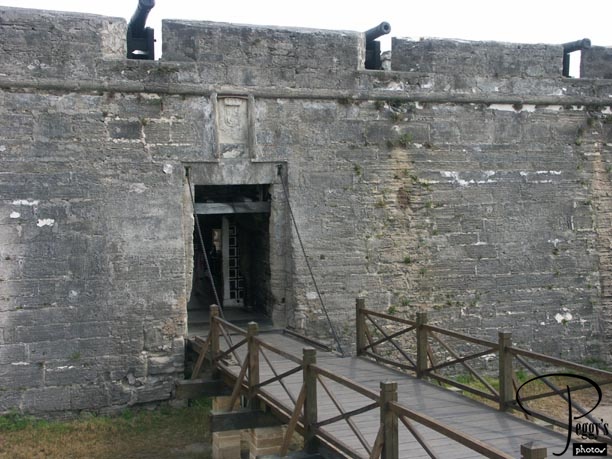
Entrance to the fort. This was the only way either in or out of the fort.

Castillo de San Marcos National Monument
Castillo de San Marcos National Monument
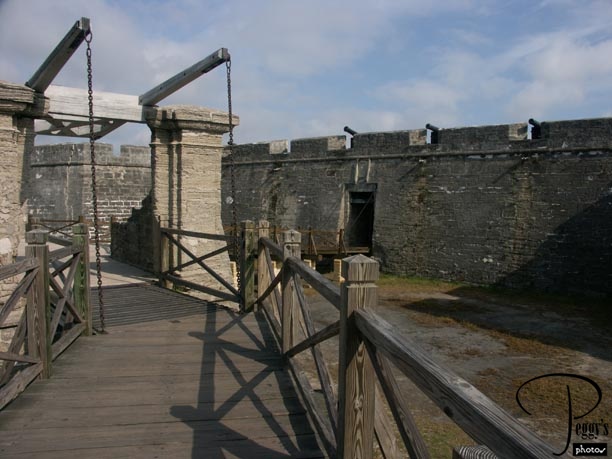
Drawbridges over the moat. There was an outer drawbridge to the ravelin, a triangular stone structure, and another drawbridge from the ravelin to the entrance to the fort. The moat surrounded the fort on all sides.

Castillo de San Marcos National Monument
Castillo de San Marcos National Monument
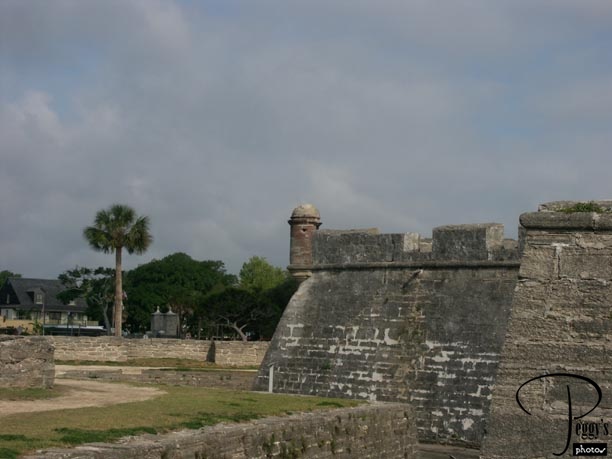
Side of the fort with the City Gate shown in the photo.

Castillo de San Marcos National Monument
Castillo de San Marcos National Monument
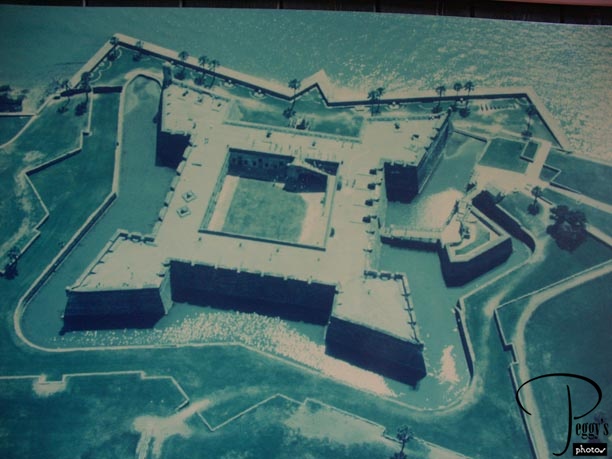
Model of the fort. It was built as a hollow square with diamond–shaped bastions at each corner, with only one way in or out. The Castillo de San Marcos was begun in 1672 and finished in 1695. It is built entirely of coquina and originally was covered in white plaster. It is the oldest masonary fort and the best–preserved Spanish colonial fortification in the United States. It was built to protect St. Augustine from pirate raids and from British forces. The British held the fort from 1763 to 1794. In 1821, when Spain ceded Florida to the United States, the fort was renamed Castillo Fort Marion and was used to house Indian prisoners.

Castillo de San Marcos National Monument
Castillo de San Marcos National Monument
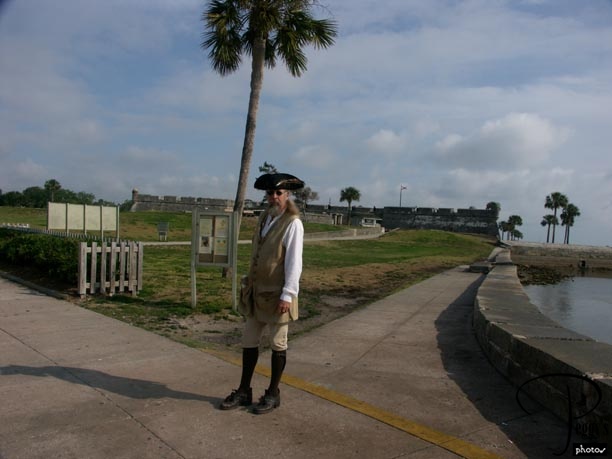
Breakfast this morning at the Casa de la Paz was fresh melon, French toast with blueberry syrup, bacon, orange juice, and coffee or tea––very good. Before breakfast, I talked to some of my co–bed and breakfasters. All were from other areas of Florida, just coming here to spend a few days. One of the younger men actually had grown up near the town where I grew up––Northport, Long Island, New York––it’s a very small world. He thought it was a great idea to have a Northport High School reunion in the city of St. Augustine, the reason why I was here. Today, I continued my pre–reunion sightseeing, first visiting the Castillo de San Marcos, which was right down the street from the Casa de la Paz. The photo shows the greeter in front of the fort.
